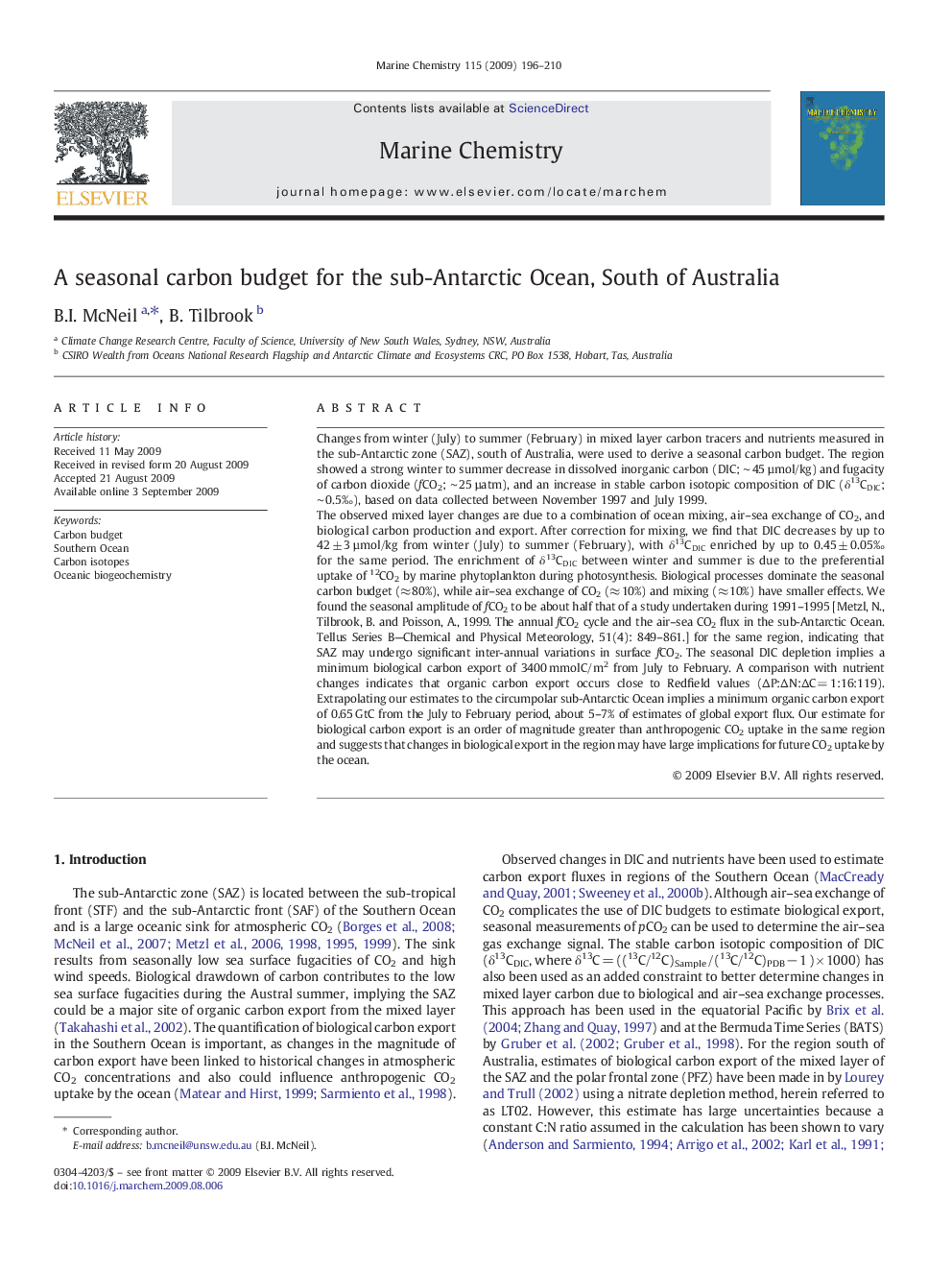| Article ID | Journal | Published Year | Pages | File Type |
|---|---|---|---|---|
| 1263170 | Marine Chemistry | 2009 | 15 Pages |
Changes from winter (July) to summer (February) in mixed layer carbon tracers and nutrients measured in the sub-Antarctic zone (SAZ), south of Australia, were used to derive a seasonal carbon budget. The region showed a strong winter to summer decrease in dissolved inorganic carbon (DIC; ∼ 45 µmol/kg) and fugacity of carbon dioxide (fCO2; ∼ 25 µatm), and an increase in stable carbon isotopic composition of DIC (δ13CDIC; ∼ 0.5‰), based on data collected between November 1997 and July 1999.The observed mixed layer changes are due to a combination of ocean mixing, air–sea exchange of CO2, and biological carbon production and export. After correction for mixing, we find that DIC decreases by up to 42 ± 3 µmol/kg from winter (July) to summer (February), with δ13CDIC enriched by up to 0.45 ± 0.05‰ for the same period. The enrichment of δ13CDIC between winter and summer is due to the preferential uptake of 12CO2 by marine phytoplankton during photosynthesis. Biological processes dominate the seasonal carbon budget (≈ 80%), while air–sea exchange of CO2 (≈ 10%) and mixing (≈ 10%) have smaller effects. We found the seasonal amplitude of fCO2 to be about half that of a study undertaken during 1991–1995 [Metzl, N., Tilbrook, B. and Poisson, A., 1999. The annual fCO2 cycle and the air–sea CO2 flux in the sub-Antarctic Ocean. Tellus Series B—Chemical and Physical Meteorology, 51(4): 849–861.] for the same region, indicating that SAZ may undergo significant inter-annual variations in surface fCO2. The seasonal DIC depletion implies a minimum biological carbon export of 3400 mmol C/ m2 from July to February. A comparison with nutrient changes indicates that organic carbon export occurs close to Redfield values (ΔP:ΔN:ΔC = 1:16:119). Extrapolating our estimates to the circumpolar sub-Antarctic Ocean implies a minimum organic carbon export of 0.65 GtC from the July to February period, about 5–7% of estimates of global export flux. Our estimate for biological carbon export is an order of magnitude greater than anthropogenic CO2 uptake in the same region and suggests that changes in biological export in the region may have large implications for future CO2 uptake by the ocean.
